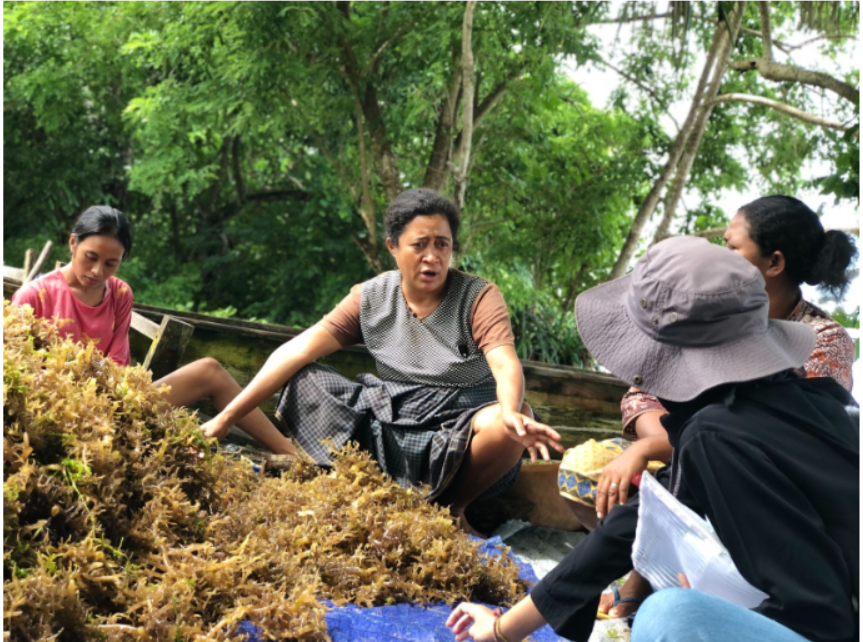
We are strengthening the capacity of a women’s group to develop a variety of seaweed products as an alternative source of income, through a series of training sessions, product development workshops, and pilot sales activities.
Project Type
- Experimentation
THE PROBLEM
East Nusa Tenggara (NTT) is one of the poorest provinces in Indonesia and has a population of around 5.5 million1. Most people work in the agricultural sector, engaging in both land and water farming activities. The farming of aquatic plants, especially seaweed, has increased rapidly over the last decade. NTT was Indonesia’s second-highest seaweed-producing province in 2018, contributing 17.5% of national seaweed production.2
In NTT, Lembata ranks second among seaweed-producing regencies. Its seaweed production grew to 129% in 2014 and has remained high since,3 reaching 949.3 tons in 2021.4 Seaweed farming is expected to help support the welfare of the local community. However, in Naga Wutung, one of the highest seaweed producer districts in Lembata, seaweed production significantly decreased lately due to pests and unpredictable weather.
To support the family economy, most women generate small and unstable income by selling raw agricultural products (i.e corn, cashew, sweet potatoes, and fruits) and fisheries products (i.e. fish and seaweed). They also have established groups that are in the early stage of developing agriculture and fish based products such as fish balls and smashed corn crackers. Yet, they have not explored seaweed which is potentially able to generate better income.
1. The Statistics Bureau of East Nusa Tenggara, 2020
2. The Ministry of Marine And Fisheries, 2019
3. The Ministry of Marine and Fisheries, 2018
4. The Ministry of Marine and Fisheries, 2018
THE SOLUTION
We will provide training to introduce a variety of seaweed-based products (eg. dodol or gummy candy, chips, and tortillas) that can be produced as an alternative source of income. We will also provide the participating women with assistance in product development, production, and distribution to consumers. Product sales can generate additional income when seaweed prices are low.
THE EXPECTED IMPACT
By providing training and assistance with seaweed product development, the following outcomes are expected:
- Women gain knowledge of seaweed product development
- Women are able to turn knowledge on seaweed product development into real skills and practice in developing seaweed products
- Women are able to market and promote their products to buyers in rural and urban markets
THE PROJECT RESULT
After the project ended, participants understood the management and marketing aspects of the business very well as well as understanding of the production process after the training. During the product iteration process, participants were able to apply knowledge into practice. The knowledge and skills were applied in real market settings during pilot sales. The participants were able to successfully promote the products and communicate with the vendors. It is expected that these skill sets can be reflected in the number of product sales which will eventually generate additional income for the women groups.
PROJECT COST
Solution development
Cost associated with initial data collection and implementation preparation
$1,861
Project implementation
Costs associated with the purchase of the solutions tested and project coordination
$12,179
Monitoring & Evaluation
Costs associated with data collection, analysis and reporting
$2,897
Administration Fee
Cost of transferring payments internationally, processing online donations (5%) and a contribution to Kopernik's operational costs (15%)
$2,401
Total $19,338
Kopernik Solutions is fundraising for this project. Kopernik Solutions will then provide a sub-grant to a trusted partner organisation who will implement the project.


